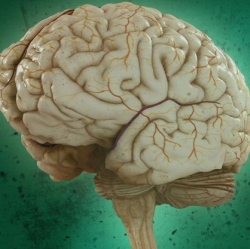
There has been a dramatic rise in the number of technology patents filed that relate to reading brainwaves. Fewer than 400 so-called neuro-technology patents a year had been filed in 2000-09, research company SharpBrains said. But that had doubled to 800 in 2010. And 1,600 such patents had been lodged in the US in 2014.
Research company Nielsen holds the most neuro-technology patents – with 100. Microsoft holds 89 patents for software that can assess mental states. The expansion into non-medical uses represented a dawn of the "pervasive neuro-technology age", said SharpBrains chief executive Alvaro Fernandez.
"Neuro-tech has gone well beyond medicine, with non-medical corporations, often under the radar, developing neuro-technologies to enhance work and life," he added. There has been a rise in the number of companies such as Thync, a start-up working to connect to the brain sensors that can alter mood in the same way as a coffee or energy drink.
And there are moves afoot to come up with ways of controlling video games via brainwaves – such as a collaboration between EEG headset-maker Emotiv and the Institute of Electrical and Electronics Engineers (IEEE).
There are also plenty of so-called neuro-marketing companies using with Electroencephalography (EEG) – a way of recording the electrical activity of the brain by placing sensors on the scalp – to try to find out what someone thinks about a new product or advert.
Matt Wall, of the Centre for Imaging Science, at Hammersmith Hospital, said: "There probably are some decent companies doing work in that space, but there are a massive number of neuro-marketing companies that have sprung up in the last few years.
"Because of the wide availability and low-cost of the EEG hardware these days, they all seek to define their unique selling point and intellectual property (ie patents) based on their fancy analysis techniques and claim to measure things like ‘engagement’ or ‘interest’ from EEG signals.
